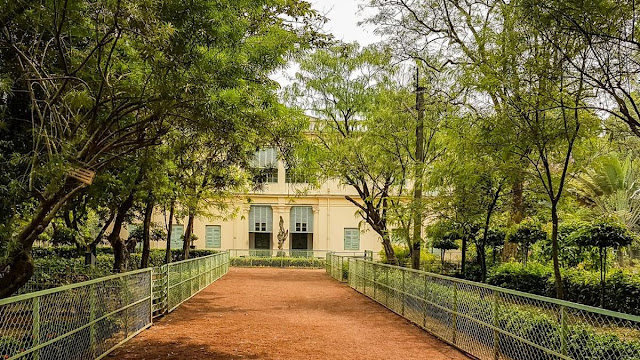Q.1. The revolutionaries who were arrested in the Central Assembly Bombing Case were?
A. Bhagat Singh & Chandrashekar Azad
B. Bhagat Singh & Batukeshwar Dutt
C. Bhagat Singh & Sachindranath Sanyal
D. Jatindra Nath Das & Bhagat Singh
Q.2. Rani Gaidinliu was the fearless freedom fighter from:
A. Manipur
B. Tripura
C. Mizoram
D. Nagaland
Q.3. The treaty of Srirangapatnam was signed between Tipu Sultan and
A. Robert Clive
B. Cornwallis
C. Dalhousie
D. Warren Hastings
Q.4. Who among the following was the first English President of the Indian National Congress?
A. George Yule
B. Alfred Webb
C. Henry John Stedman Cotton
D. William Wedderburn
Q.5. Both the processes of transfer of power and the partition of India were hurried through in ____ days?
A. 72
B. 94
C. 86
D. 92
Q.6. Albuquerque captured Goa from the ruler of
A. Golconda
B. Vijaynagar
C. Ahmednagar
D. Bijapur
Q.7. The two Home Rule Leagues in India were led by:
A. Bal Gangadhar Tilak and Annie Besant.
B. Annie Besant and G.K. Gokhale
C. Bal Gangadhar Tilak and Pheroze Shah
D. Annie Besant and K.T. Telang.
Q.8. The East India Company received the zamindari of the 24 parganas from:
A. Siraj-ud-Daulah
B. Mir Jafar
C. Mir Qasim
D. Chanda Sahib
Q.9. The founders of Theosophical Society, Colonel Olcott and Madame H.P. Blavatsky set up their first office in India in:
A. Thiruvananthapurami
B. Tiruchirapalli, Tamil Nadu
C. Cochin, Kerala
D. Adyar, Madras
Q.10. When the Simon Commission visited India, the Viceroy of India was ___.
A. Lord Irwin
B. Lord Willingdon
C. Lord Linlithgow
D. Lord Reading
Answers
1-B
Notes: Bhagat Singh and Batukeshwar Dutt had hurled bombs in the Central Legislative Assembly in Delhi on April 8, 1929.
Batukeshwar Dutt and Bhagat Singh were members of the Hindustan Socialist Republican Association.
Among those present in the Central Legislative Assembly when the bombing took place were Motilal Nehru, Sardar Vallabhbhai Patel, Muhammad Ali Jinnah, Madan Mohan Malaviya, Sir John Allsebrook Simon (of the Simon Commission).
2-A
Notes: Rani Gaidinliu was a Naga woman revolutionary leader and successor to the political movement launched by the Naga leader Haipou Jadonang (1905-31) to derive away the British from Manipur. She was born in 1915.
After the execution of Jadonang in 1931 by the British, Rani Gaidinliu led a popular rebellion against the British rule at the young age of sixteen.
Rani Gaidinliu was described by Jawaharlal Nehru as the Rani of the Nagas.
3-B
Notes: The Third Anglo-Mysore War (1790-92) came to an end by the Treaty of Seringapatam (also called Srirangapatinam or Srirangapatna), signed 18 March 1792. Its signatories included Lord Cornwallis on behalf of the British East India Company, representatives of the Nizam of Hyderabad and the Maratha Empire, and Tipu Sultan, the ruler of Mysore.
Under the terms of the treaty Tipu Sultan had to surrender of nearly half of Mysorean territory to the victorious allies.
4-A
Notes: George Yule served as the fourth President of the Indian National Congress in 1888 at Allahabad.
5-A
Notes: On February 20, 1947 British Prime Minister Clement Attlee declared the British would quit India before 30th June 1948. The processes of transfer of power and the partition of India were hurried by 72 days. India was partitioned on the basis of the "Indian Independence Act". The Indian Independence bill was introduced on 4th July, 1947. It received Royal assent on 18th July, 1947 and came into force on 15th August, 1947.
Clement Attlee of Labour Party was the British Prime Minister from 1945 to 1951.
6-D
Notes: Yusuf Adil Khan of Adil Shahi Dynasty of Bijapur was succeeded by his 13-year old son Ismail Adil Khan. As soon as he took the reigns of the kingdom, he has to cede Goa in 1510 to the Portuguese under their governor Afonso de Albuquerque.
7-A
Notes: Home Rule League was led by Indian nationalist Bal Gangadhar Tilak and British social reformer and Indian independence leader Annie Besant.
8-B
Notes: The name 24 Parganas is derived from the number of parganas or divisions contained in the Zamindari of Calcutta which was ceded to the East India Company by Mir Jafar in 1757.
9-D
Notes: Theosophical Society was founded in 1875 in New York in the USA by Madame H. P. Blavatsky and Colonel H. S. Olcott. They came to India in January 1879 and set up the headquarters of the society at Adyar, presently a suburb of Chennai in Tamil Nadu.
10-A
Notes: Simon Commission , also known as the Indian Statutory Commission, came to India in 1928.









